From 22 March 2022, the Château de Montsoreau – Museum of contemporary art presents a new exhibition dedicated to Art & Language titled: www.art-language.org
- MONTSOREAU, France
- /
- March 22, 2022
From early works to more recent ones, the exhibition is a migration into the physical world of the content of the website www.art-language.org which questions the place of the digital world in the work of Art & Language.
The Philippe Méaille collection unveils its new acquisitions on the three levels of the museum.
COMPUTER LANGUAGE, A SUBJECT FOR THOUGHT
To evoke the centrality of the digital in the work of Art & Language, the Château de Montsoreau – Museum of contemporary art has conceived this exhibition as an allegory.
The curatorial narrative uses concrete elements (sounds, paintings, videos...) with their counterpart in a digital environment created by Art & Language in 1999. The choice of a URL as the title of the exhibition is there to point to the interface between the material world and the virtual world, to question certain conventions as to the materiality of the work of art.
THE LOW TECH CHOICE
At the dawn of the digital revolution, Art & Language produced a CD-ROM to accompany the catalogue of the exhibition Too Dark to Read: Retrospective Patterns 2002-1965 at the Musée d'art Moderne de Lille métropole.
While working on the project, the curatorial team of the Château de Montsoreau noticed this computer program had all the characteristics of a regular website code. A webmaster was asked to verify this hypothesis, which proved conclusive.
"Our decision to put online in 2022 a website designed by Art & Language in 1999, twenty-five years earlier, shows how much Art & Language has been aware of the challenges of the emergence of this new language from the very beginning. Putting a low-tech website online in an era of accelerating super technology is a conscious choice. It shows how much this choice for a reliable and durable easy to-built programming technology makes room for creativity. It speaks also of sustainability, resilience and the environment", says Marie-Caroline Chaudruc, Director of the museum.
NEW ACQUISITIONS
Map for an Art & Language Website (1998-1999) is the central work of the exhibition. This monumental work, which is the latest acquisition from the Philippe Méaille collection, takes the form of a large five-meters long scroll, occupied by a cloud of data, linked together in a complex network of ramifications, an arborescence we would say nowadays. Art & Language work Dialectical Materialism no.4 (SURF), 1975 suggests that the visitor surf physically through the exhibition, as they would do in a website.
« It is legitimate to wonder about the materiality of the metaverse, to know if it will be coloured, black and white or consist of projections but, as in the real world, these decorative questions should not obliterate the essential fact that one cannot live there alone. », declare Philipe Méaille, President of the Château de Montsoreau – Museum of contemporary art.
Art & Language has "become a pirate, a soldier, a
poet, or worse, glorifying or seeking a destructive
form of poetry in circumstances where, as it now
realizes, such an enterprise can only be rightly
derided."
Confessions, 2011, Ecole Supérieure des Beaux-Arts
du Mans
HARDWARE / SOFTWARE
From the very beginning of Art & Language, their interest in the new languages of computer programming gave rise to the creation of several works.
In his video work M1 (1968) David Bainbridge plunges into a science fiction universe mixing art and technology and questions the capacity of a machine to become a medium in itself for the artist. In 1969, Harold Hurrell's The Cybernetic Art Work That Nobody Broke is an interactive work that takes a critical look at algorithms. The work allows the user to enter choices but refuses all choices except 1 and 0. Any other choice produces aggressive messages from the system. If the user enters a number other than 0 or 1, the program displays the message, "YOU HAVE NOTHING, OBEY INSTRUCTIONS!" In 1972, Art & Language installed Index 01 at Documenta V in Kassel, the first index in a long series. The installation consists of 8 filing cabinets, each with 6 drawers with hanging folders in which printed or typed texts are installed. The files contain all the texts published in the Art-Language journal. The indexing system of the texts is displayed on the wall. Index 01 analyses the internal (and by implication external) intellectual structures and relationships of Art & Language over a period of several years, a growing interest in data and their different mapping categories.
MEDIA THEORY
Although it is true that new technologies have interested Art & Language since their appearance in the 1960s, the collective has been deliberately absent from the web because of its rapid commercial drift. In a distanced attitude, Art & Language has not opened an account on social networks, nor created a "showcase" site. The computer program written by Art & Language in 1998-1999 for the web had never been put online.
Marshall McLuhan's theory that ‘old media serve as content for new media’ could well describe what is at stake in its conception. The two works Homes from Homes I and Homes from Homes II are the navigational palettes to surf into the website, which is itself made up of seven sub-sets.
« The instance of the electric light may prove illuminating in this connection. The electric light is pure information. It is a medium without a message, as it were, unless it is used to spell out some verbal ad or name. This fact, characteristic of all media, means that the "content" of any medium is always another medium. The content of writing is speech, just as the written word is the content of print, and print is the content of the telegraph. If it is asked, "What is the content of speech?," it is necessary to say, "It is an actual process of thought, which is in itself nonverbal."» Marshall Mc Luhan, The medium is the massage
CHRONOLOGY
Art & Language was historically built in critical opposition to the normativeness of Modernism, which was erected as a main stream art system under the aegis of formalist critics Clement Greenberg and Michael Fried.
These early conceptualists saw Modernism as an instrument of neo-capitalism and American imperialism.
Art & Language was founded in 1967 in Great Britain by four teachers: Terry Atkinson, David Bainbridge, Michael Baldwin and Harold Hurrell. Their paths first crossed in 1966 when they were art teachers at Coventry University. They began to produce collective works and together conceived a magazine, Art Language, the first issue of which was published in 1969. The magazine gave its name to the collective. The choice of a collective and therefore anonymous production was a militant gesture, intended to counter the starification of the artist. A simple stamp bearing the inscription "Art and Language" was used to sign the works.
Even then, the concerns of Art & Language went far beyond the traditional fields in which art can be investigated.
Charles Harrison (1942-2009) and Mel Ramsden joined Art & Language in 1970. The collective was a great success and the conversation between the four teachers crossed the Atlantic to become international. More than fifty British and American artists and art critics also joined the collective between the late 1960s and early 1980s: Charles Harrison, Philip Pilkington, David Rushton, Lynn Lemaster, Sandra Harrison, Graham Howard, Paul Wood, and in New York, Michael Corris, and later Paula Ramsden, Mayo Thompson, Christine Kozlov, Preston Heller, Andrew Menard and Kathryn Bigelow.
From the very beginning of its activity, Art & Language critically questioned the conditions of existence of a work of art. Air-Conditioning Show (1966-67) or Later Impressionism returning sometime in the Future (1984) question the status of the work of art, its potential limits.
From the 1970s, Art & Language initiated a vast and ambitious indexing project. From 1974, the New York branch of Art & Language published the magazine The Fox (1974-1976). A competition for the defence of individual interests began, revealing in particular an opposition between Americans and English on political and theoretical questions.
In 1977, following major fluctuations within the group, the practice of Art & Language was taken into the hands of Michael Baldwin and Mel Ramsden, with Harrison collaborating on written productions.
EXHIBITION WWW.ART-LANGUAGE.ORG
22 March - 30 June 2022
Every day from 12pm to 6pm
Château de Montsoreau - Museum of Contemporary Art
Passage du marquis de Geoffre
49730 Montsoreau
www.chateau-montsoreau.com
Passage du marquis de Geoffre
Montsoreau , France
contact.chateaudemontsoreau@gmail.com
+33 (0)2.41.67.12.60
https://www.chateau-montsoreau.com/wordpress/en/




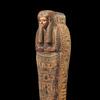

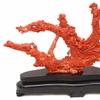


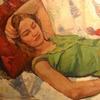
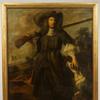
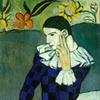
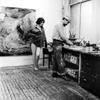
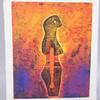
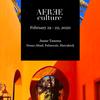

_2018_2-high-res-Muholi100x100_c.jpg)